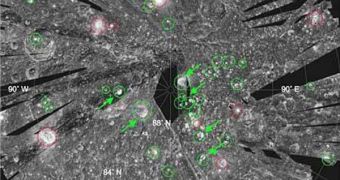There is currently no doubt in people's minds that we will someday end up exploiting the Moon for resources, and some believe that that day may come sooner than anyone expected. Still, experts say that legal issues are still a challenge in this area, and that future companies need to solve this issue first.
This is for their own good, analysts say, because otherwise there would be no way for exploitation companies to ensure that whatever they dig up from the lunar soil is theirs to sell on.
Corporations need to be granted explicit title over the part of the lunar surface they will be exploited, and this can be done only if the governments decide on how to split Earth's natural satellite among themselves. The UN will most likely have to get involved also.
In other words, experts advise companies to refrain from sending spacecraft to the Moon, even if the technology to do so already exists, or is within reach. It is best to let the legal framework be established first, they add.
According to a document called the Outer Space Treaty, which was signed in 1967, it would appear that extraction activities are not forbidden on the Moon, or on other bodies in the solar system.
Yet, experts in space law have not interpreted the Treaty as providing whomever extracts the resources with exclusive ownership and exploitation rights over it. This is absolutely necessary if a company or government is to sell whatever materials they dig up.
Considering that initiating a Moon-landing and exploitation scheme with today's technologies would cost tens of billions of dollars, this legal set-back is not to be taken lightly, legal experts say.
“As far as title goes, it's a gray area. And from a risk perspective, lack of clarity means it doesn't exist,” says space-law expert Timothy Nelson, who is also an international lawyer working at Skadden, in New York City
Undoubtedly, the most important resource on Earth's natural satellite is water, in its various forms. Back in 2009, NASA managed to demonstrate that the stuff actually exists at the lunar south pole, Space reports.
The fact that it can readily be found on the Moon – and in higher concentrations that anyone ever anticipated – means that lunar exploration becomes possible. This water could be used for drinking, producing hydrogen fuel and oxygen for breathing, and so on.
But the propellant produced in this manner could be sold in orbital refueling stations, which would be used by satellites and spacecraft departing Earth. This would extend their range considerably, seeing how a large portion of the fuel space probes consume is around Earth.

 14 DAY TRIAL //
14 DAY TRIAL //